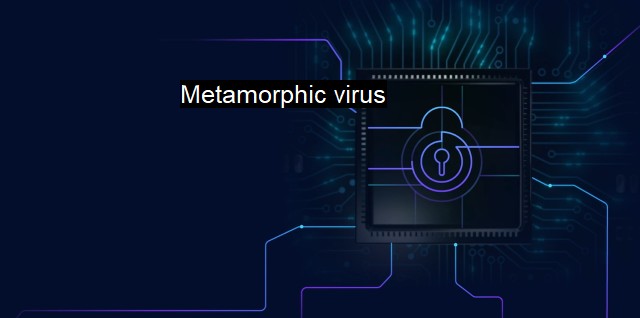What are Metamorphic virus?
Decrypting the Metamorphic Virus: The Strategic Measures for Detection Against Advanced Encryption Techniques
Metamorphic viruses are among the most advanced types of malware prevalent in today's digital world. They pose a significant threat to computer systems as they are continually changing their code, which thwarts any efforts at detection by popular antivirus software. The expertise in their design is characterized by the degree of damage they can cause to systems while evading antivirus programs. Understanding the mechanisms of a metamorphic virus provides insights into cybersecurity and allows for the development of robust solutions to deal with such sophisticated threats.Metamorphic viruses are so named because of their unique ability to alter their underlying binary code with every new infection, thus making each iteration of the virus slightly different from the previous one. This constant transformation allows them to adapt rapidly and keep up with virus-detection technologies. They employ techniques such as register renaming, code permutation, code expansion, and code compression to change their representation without altering the virus payload.
To completely comprehend the concept of a metamorphic virus, one must understand its lifecycle. It starts just as any other virus does, with an infection. The metamorphic virus behaves like a standard virus during its various infection phases. when replicating itself, the virus includes a "morphing engine," which is a unique part of the virus programming that is capable of dismantling and reassembling the virus's code in a new pattern without affecting the actual working of the virus. Some advanced versions of these viruses, while undergoing this metamorphosis, can also encrypt their internal code, which further enhances their ability to elude detection.
Although metamorphic viruses can cause a lot of damage, they have one drawback from the attacker's perspective. The complexity of their design implies that they take up substantial system resources and storage space. This trade-off between functionality and sophistication makes it challenging to develop a highly infectious and hard-to-detect metamorphic virus. those viruses that do achieve such balance pose a severe threat to computer systems and the integrity of data stored in them.
Despite the paradoxical challenge that metamorphic viruses present, cybersecurity researchers have been developing techniques and strategies to combat them successfully. One common detection approach is to employ heuristic analysis. Heuristics is a method of detection wherein the software application performs a behavior-based analysis to identify any potential threats. Since metamorphic viruses change their appearance but not their behavior, heuristic analysis can successfully detect and identify these viruses.
The strength (and the curse) of metamorphic viruses is their transformation capability. Neutralizing this strength, cybersecurity experts and antivirus program designers execute static and dynamic analysis. While static analysis fundamentally targets the codes for examining the syntax, the dynamic approach monitors the behavior in real-time, as the program or data executes.
Advanced machine learning, too, has started to take a pivotal role in detecting metamorphic viruses. Artificial intelligence tools can be used to predict changes in virus codes and expose them before they can ensue in any serious damage to the system.
Metamorphic viruses represent one of the more potent threats in the digital world due to their complexity and ability to constantly elude detection. Therefore, intensive research needs to continue to study their behavior and patterns to develop advanced antivirus software capable of handling this ever-evolving threat. Comprehending the technical complexity underlying these viruses is requisite for addressing the challenges encountered in the intricate world of cybersecurity. Resources must continue to pour in to meet contemporary cybersecurity threats, devise timely solutions, educate the masses about safe practices, and preserve the sanctity of cyberspace.

Metamorphic virus FAQs
What is a metamorphic virus?
A metamorphic virus is a type of computer virus that is designed to continuously change its own code and structure in order to evade detection and make it more difficult for antivirus software to identify and remove it.How does a metamorphic virus work?
A metamorphic virus works by using complex algorithms to dynamically modify its own code and structure every time it replicates itself. This makes it very difficult for antivirus software to detect and identify the virus, as the code is constantly changing.What are the dangers of a metamorphic virus?
Metamorphic viruses can be extremely dangerous as they are designed to evade detection, making it easier for cybercriminals to carry out attacks on computer systems. They can also be hard to remove once they have infected a system, which can cause significant damage to the affected computer.How can you protect your computer against a metamorphic virus?
To protect your computer against a metamorphic virus, it is important to keep your antivirus software up to date and running at all times. You should also avoid opening suspicious emails or downloading software from untrusted sources, and make sure that your operating system and applications are updated with the latest security patches.| | A | | | B | | | C | | | D | | | E | | | F | | | G | | | H | | | I | | | J | | | K | | | L | | | M | |
| | N | | | O | | | P | | | Q | | | R | | | S | | | T | | | U | | | V | | | W | | | X | | | Y | | | Z | |
| | 1 | | | 2 | | | 3 | | | 4 | | | 7 | | | 8 | | |||||||